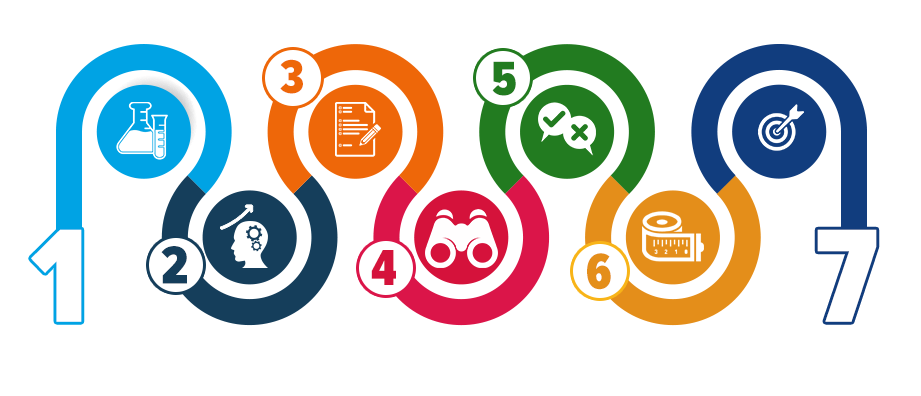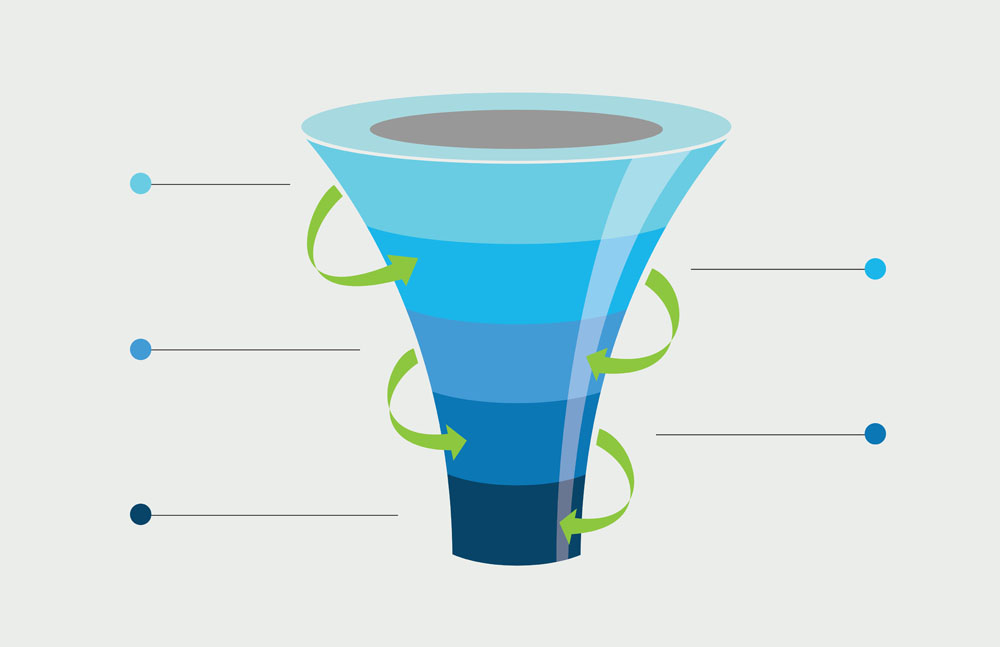
Qualitative research is what we consider the first real technical step of market research. The qualitative questionnaire(also called interview guide) is instrumental for the success of this phase. In this post we explain EXACTLY how to prepare it.
As we’ve explained in other posts, market research is NOT only administrating a survey. It’s much more than that (get an overview of market research tools and techniques on our online guide).
Today we’d like to discuss what we consider being the very first step when it comes to better understand your market and your future customer: conducting interviews.
Table of contents
- Introduction
- Step 1 : define your topics
- Step 2 : rank your topics
- Step 3 : define the questions
- Our secret tip for framing better questions
- Conclusion
Introduction
Interviews are just one of many qualitative research tools available to the market researcher. You could also do focus groups, participatory or non-participatory observations. The range is very wide. If you want to know more we recommend you read this book by D. Silverman who has featured my work in the latest edition of his book. Choosing the right qualitative technique (or the right combination of techniques) is a work in itself. We have prepared a quite complete list of marketing problems you my face with the methodological approaches we recommend.
But whatever you chose to do you should make sure you do it right. Don’t do like most people we met who just ask a few questions, don’t even take the time to write them down and after having interviewed 5 people think they are finished. Qualitative research is more than that. Do it the right way and you’ll be rewarded.
On the funnel below (which represents the 7-step market research approach detailed here), qualitative market research (to which qualitative interviews belong) is step #5.
Before you even start: the literature review
Preparing an interview guide (or qualitative questionnaire) requires that you master the topic you will cover. In particular you need to do your homework to understand what has already been said, written, researched on the topic. You could look after professional reports to get that knowledge. However, for the sake of quality, we highly recommend you only use academic sources. We have explained all you need to know about desk research. It’s one of our most comprehensive articles written in the last 10 years, so make sure you read it.
We suggest you use Google Scholar to find the latest academic articles on your topic. If you want to conduct qualitative interview about organic food consumption, a search in google scholar will return this.
As you can see I’ve entered “organic food consumption” as keywords and have not used any filters. I already get interesting results and some articles are freely available (I’ve highlighted them in yellow). This means you won’t have to pay to get access to them. Normally most scientific articles can be accessed only if you pay; unless you are a student or a researcher and in that case you can access them through your local library.
STEP 1 : define your topics
Before even starting out, you have to define which topics you want to cover. Two or three topics are the maximum. Don’t try to cover too many. That won’t work. Remember.
If you want to investigate organic food consumption, you need to focus on that. You won’t have time to explore in depth other topics (non-organic food consumption or non-food organic consumption for instance). You really need to dedicate all your energy and all your focus to that topic. Along the way you probably will discuss anyway other topics that touch on your main one.
Your main topic (organic food consumption) will fold into sub-themes. Here are a few examples that come to mind :
- The patterns of organic shopping
- The patterns of organic food consumption
- Health
- the reasons behind organic food consumption
- How respondents’ behaviors have changed since they adopted organic food
- …
These sub-themes will come from your literature (that’s why it’s important to do one) and you’ll have to order them in your qualitative questionnaire.
STEP 2 : rank your topics
Now that you topics are defined, you have to rank them. Use the funnel method (hence the image above) and start with the most general topic and then move to more particular ones. This ranking will ensure your interview doesn’t look strange when conducted. It will follow a natural path that will not bother the interviewee.
Just like in a quantitative questionnaire you also need to end your interview with the questions that require the less cognitive energy. If your qualitative interview includes some creative techniques (collage, image ranking, …) do that at the beginning.
From a strategic viewpoint it’s also important not to end with the most important themes. You want your respondents to be in full cognitive power to answer your most important questions.
STEP 3 : define your questions
For each theme you should have a set of questions at your disposal to cover the different possible aspects. Keep this in mind: it is impossible to address one topic (especially when it’s complex) with one question alone. Usually, you’ll need three or more questions. Here again use the funnel technique. Start with a general open question, then with an open-ended one, and finish with a directed question.
Defining and framing the questions is obviously a big factor of success. The good news is that other researchers before you have been faced with the same issues. Other researchers have tried to define and validate what what are called “scales of measure”. Scales are intrinsically quantitative instrument that allow the measurement of a construct. Although they are primarily used for quantitative research, scales offer great insights into which questions to ask. Why not use these scales to define the questions of your qualitative questionnaire too?
Our secret tip for better questions: the book of scales
This is a tip no one will probably give you. You can get access to a book of scales for free (at least partially) and define qualitative questions that will make the difference. Use the table of content to find the construct(s) you need to evaluate and go to the dedicated chapter to see which questions you need to ask. A book of scale is worth 150$ and you’ll get it partially free below.
Conclusion
Here’s the rule you should remember for your next qualitative interview : 3×3=9. You should have no more than 3 themes to address, and address each topic with 3 questions. Eventually 9 questions should be sufficient to conduct the interview. The Art is actually in maintaining a good level of dialogue with the respondent and to make sure the answers provided are the most comprehensive.
Posted in Marketing.



1 August 2017
Thanks 🙂
12 November 2017
But it can be 3×4, right? One main topic with four sub topic? Perception on four areas..
7 January 2019
Very helpful comments. Will use this information in my research.
8 January 2019
You are most welcome. Always happy to help.
6 April 2023
thank you it was very helpful